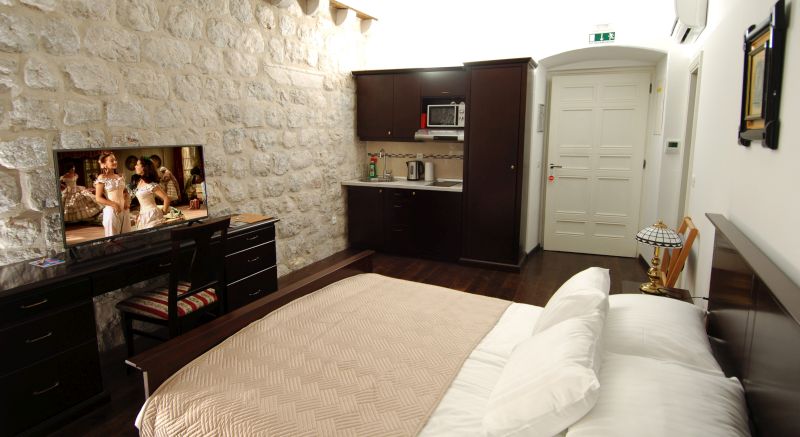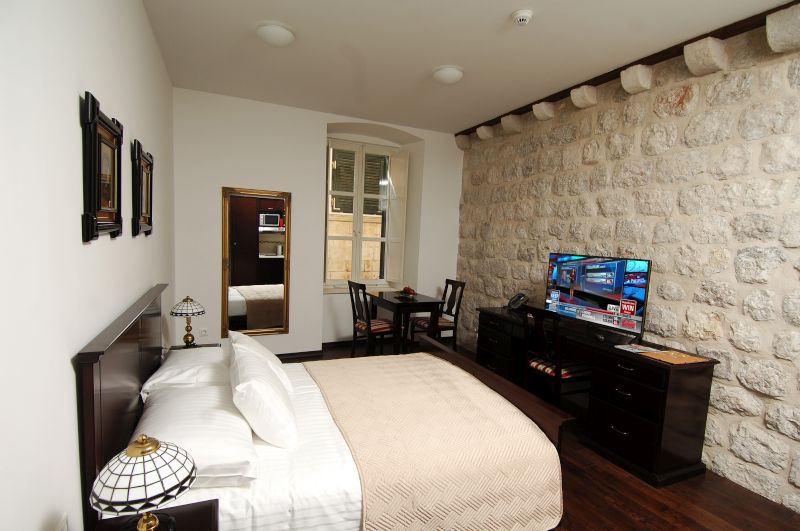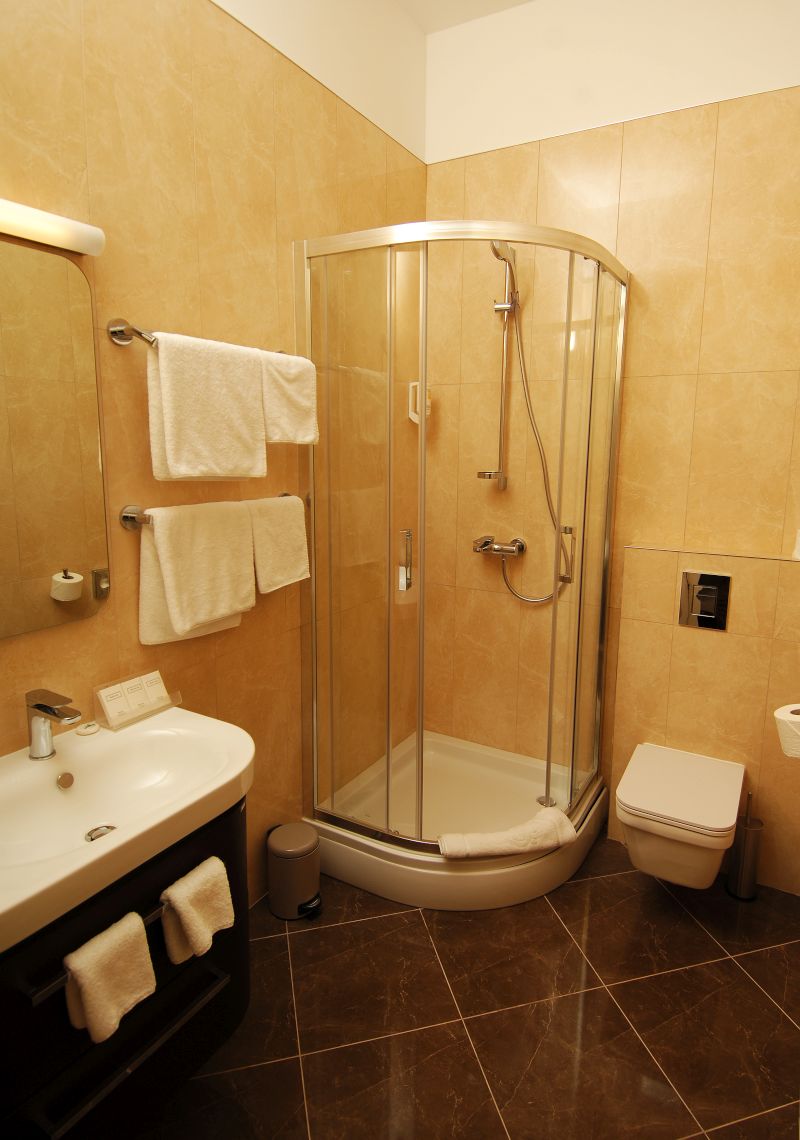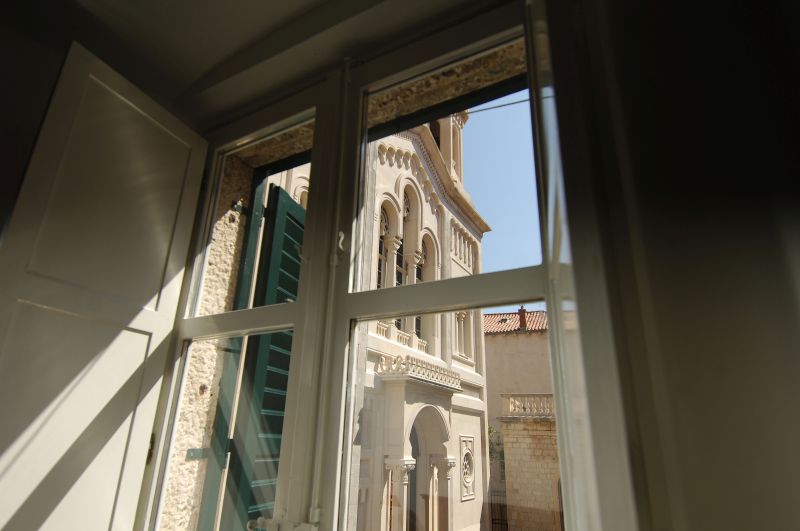Availability
We are sorry, this accommodation is not available to book at the moment
Dubrovnik S1
Classic studio apartment is in the heart of Dubrovnik Old Town and it is located just a few steps from famous Stradun street. It blends vibrant interior design and historical touch to provide unique accommodation in most central part of Dubrovnik.
This apartment is a fantastic place for you to stay while visiting Dubrovnik, Croatia. It is an ideal base from which you can plan your daily activities, from cultural visits of Dubrovnik old town, to boat trips to the islands, day on the beach, visit to nearby regions and much more.
CLASSIC STUDIO APARTMENT
SIZE:
23 sqm
ACCOMMODATION:
1 queen size bed 160×200 cm
MAXIMUM CAPACITY:
2 guests
BATHROOM:
1 bathroom with shower
KITCHENETTE
FACILITIES:
AC, SAT TV, wireless Internet, microwave, safety deposit box, hairdryer, telephone, toiletries
IMPORTANT INFORMATION
Check-in time after 3 p.m.
Check-out time before 11 a.m.
It is completely a non smoking property
Pets are allowed at no extra charge
Baby cots are provided on request at no extra charge
Bed linen and towels are provided
Weekly cleaning (with change of linen and towels) is included in price for stays longer than 7 days
Common laundry facilities
No parking available
City tax is 1€ per person per night is included
Minimum stay 2 nights/ one night stay +20%
Whether you are in Dubrovnik on business or on vacation, this apartment with its excellent location would be a perfect choice!
Check-in time
Check-out time
Facilities
- Air condition
- Down town
- Kitchen
- Safe deposit box
- Satellite TV
- Telephone
- Wi-Fi
Internet
Parking
We are sorry, there are no reviews yet for this accommodation.
Dubrovnik
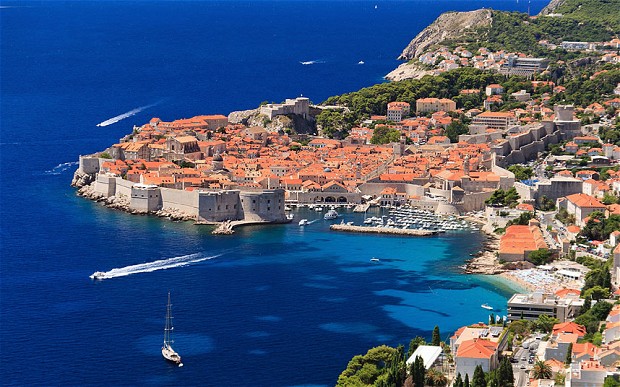
Dubrovnik is located on the thin coast strip between the high hills and the calmness of the Adriatic sea.
The ‘Pearl of the Adriatic’, on the Dalmatian coast, was an important Mediterranean sea power from the 13th century. Dubrovnik was founded in the first half of the 7th century by a group of refugees from Epidaurum, who established their settlement at the island and named it Laus. The Latin name Ragusa (Rausa), in use until the 15th century, originated from the rock (Lat. lausa = rock). Opposite that location, at the foot of Srđ Mountain, the Slavs developed their own settlement under the name of Dubrovnik, derived from the Croatian word dubrava, which means oak woods.
In 1979, the city of Dubrovnik joined the UNESCO list of World Heritage Sites.
Counting only about 35 000 people Dubrovnik is the cultural and social center of the region.
Vegetation in the region is typical, mostly Mediterranean, and it is a result of hundreds of years of human influence. As suited for a merchant harbour city, Dubrovnik mariners traveled far and wide bringing home many tropical and sub-tropical cultures, creating an interesting mixture of plant life.
The name of the most famous street of Dubrovnik is Placa (Stradun) street .
- Dubrovnik is a remarkably well-preserved example of a late-medieval walled city, with a regular street layout. Among the outstanding medieval, Renaissance and Baroque monuments within the magnificent fortifications and the monumental gates to the city are the Town Hall (now the Rector’s Palace), dating from the 11th century; the Franciscan Monastery with its imposing church; the extensive Dominican Monastery; the cathedral (rebuilt after the 1667 earthquake); the customs house (Sponza), the eclectic appearance of which reveals the fact that it is the work of several hands over many years; and a number of other Baroque churches, such as that of St Blaise (patron saint of the city).
The original World Heritage site consisted solely of the defences and the intra-mural city.
It includes the Pile medieval industrial suburb,the Lovrijenac Fortress, located on a cliff,the Lazarets,the Revelin Fortress.
The island of Lokrum lies to the south-east of Dubrovnik, some 500 m from the coast. In 1023 it became a Benedictine abbey.
Dubrovnik is Croatia’s most famous coastal city.
Sports & nature
 Elafiti Islands is the archipelago of thirteen islands streching northwest off Dubrovnik. The name of Elafiti Islands comes from the Greek word elafos, meaning a deer. Out of thirteen islands only three are inhabited.
Elafiti Islands is the archipelago of thirteen islands streching northwest off Dubrovnik. The name of Elafiti Islands comes from the Greek word elafos, meaning a deer. Out of thirteen islands only three are inhabited.Nightlife info
 Nightlife in Dubrovnik begins every night after sundown as people start to walk up and down the main street - Placa street (Stradun), in a kind of a customary walk before the good times get rolling.
Almost every side street in the City has a few venues, bars or pubs. Some are more popular than the other. Since the bars can not fit all the people inside, the people crowd the street and it is usual for the waiter to serve them in the street, close to the bar.
Nightlife in Dubrovnik begins every night after sundown as people start to walk up and down the main street - Placa street (Stradun), in a kind of a customary walk before the good times get rolling.
Almost every side street in the City has a few venues, bars or pubs. Some are more popular than the other. Since the bars can not fit all the people inside, the people crowd the street and it is usual for the waiter to serve them in the street, close to the bar.
Culture and history info
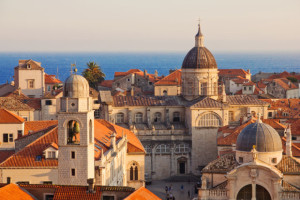 Dubrovnik's most beloved church is St Blaise's church, built in the 18th century in honour of Dubrovnik's patron. Dubrovnik's baroque Cathedral was built in the 18th century and there is an impressive Treasury with relics of Saint Blaise.
A feature of Dubrovnik is its walls that run almost 2 km around the city.
Dubrovnik's most beloved church is St Blaise's church, built in the 18th century in honour of Dubrovnik's patron. Dubrovnik's baroque Cathedral was built in the 18th century and there is an impressive Treasury with relics of Saint Blaise.
A feature of Dubrovnik is its walls that run almost 2 km around the city.
Read more

